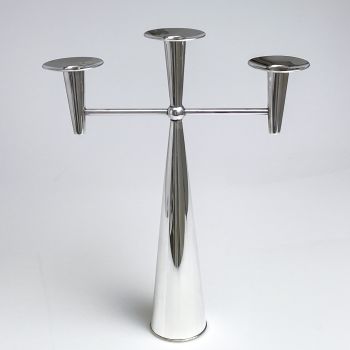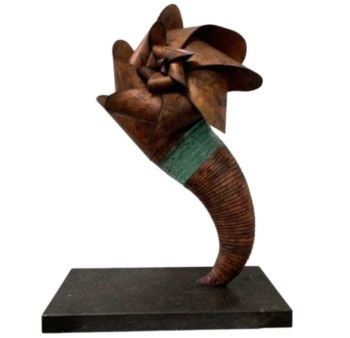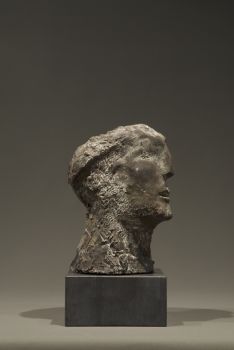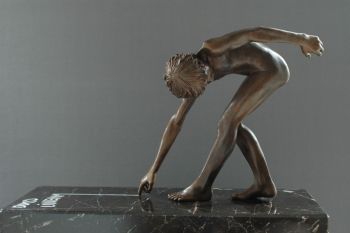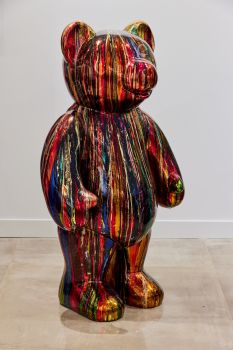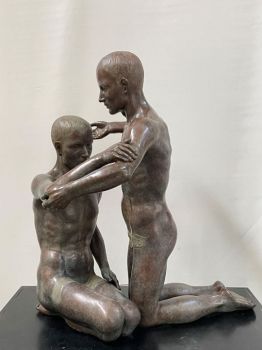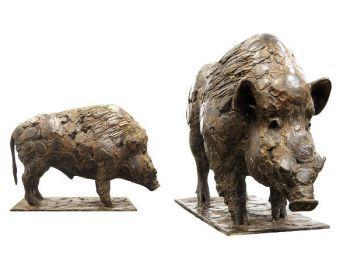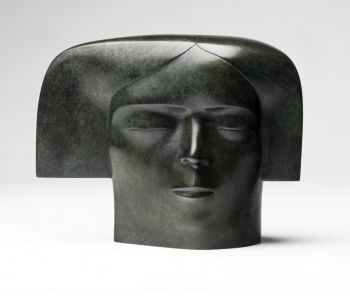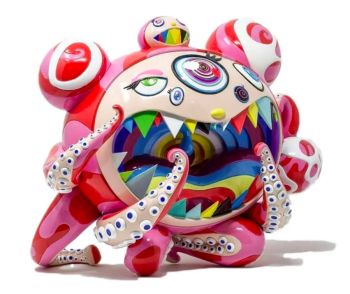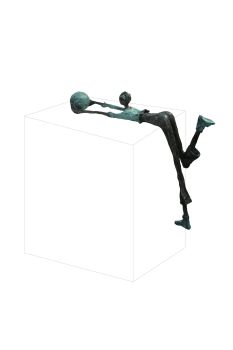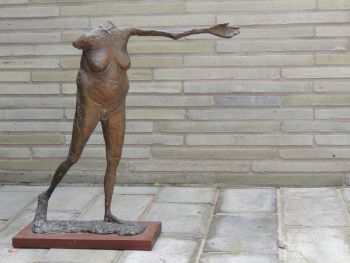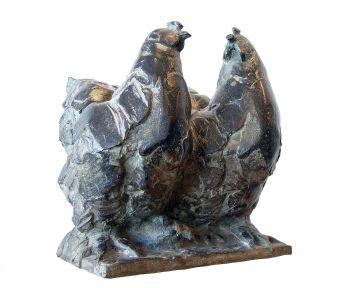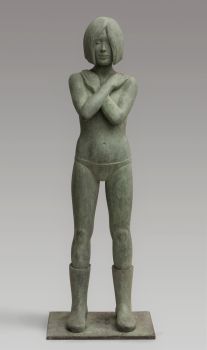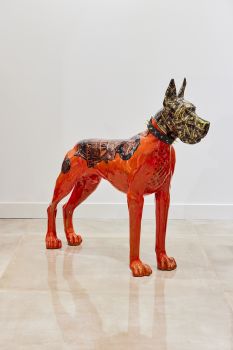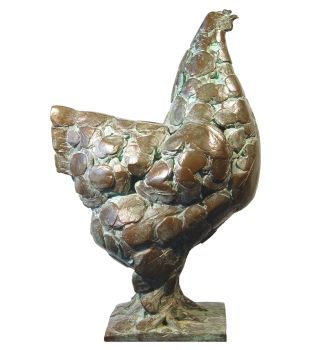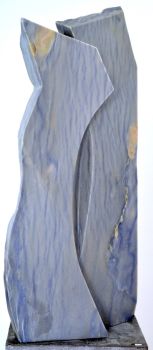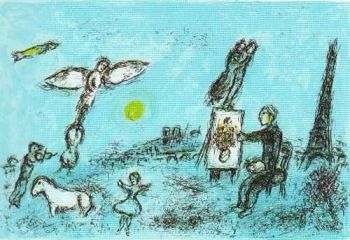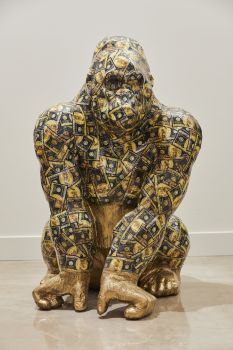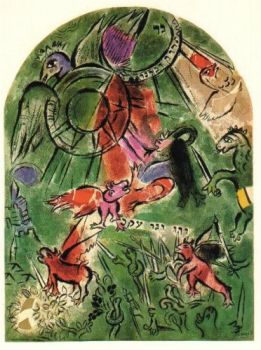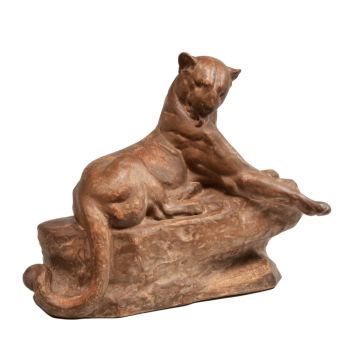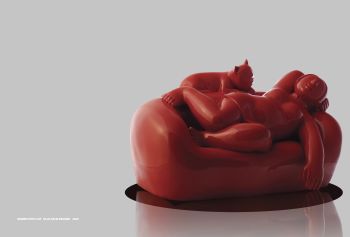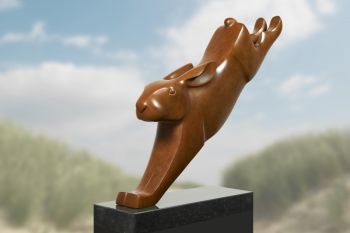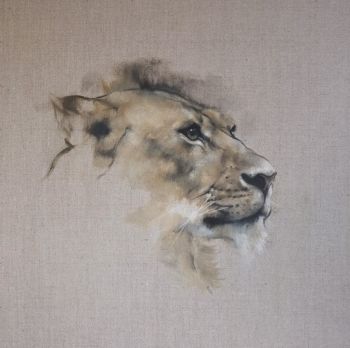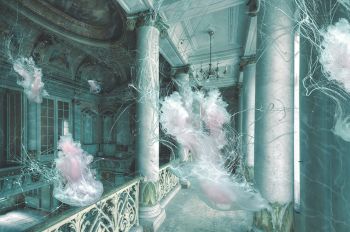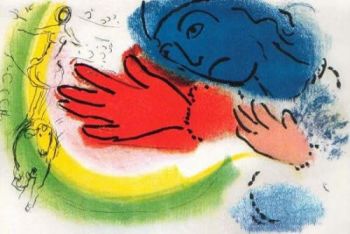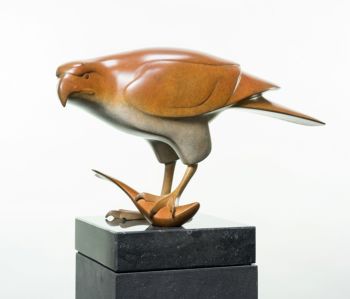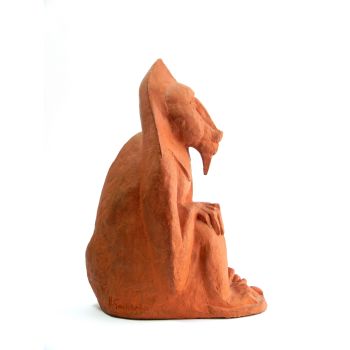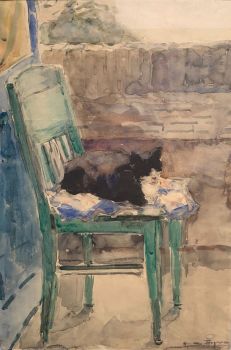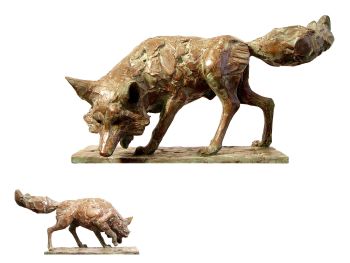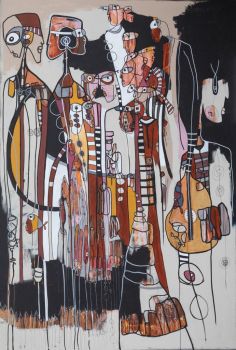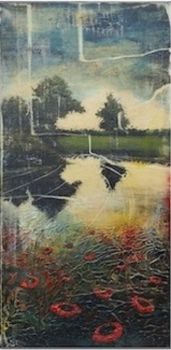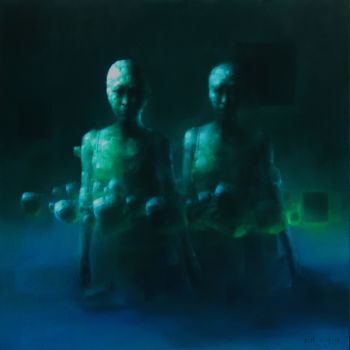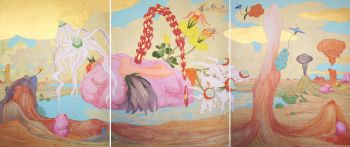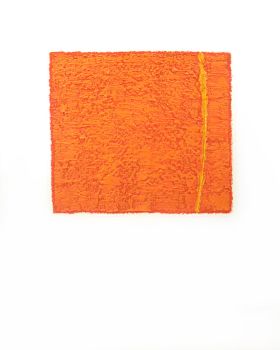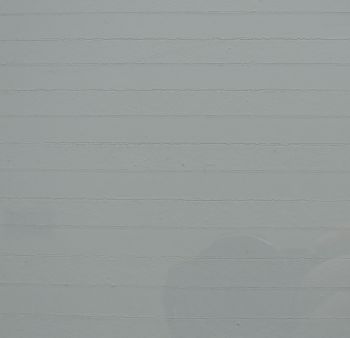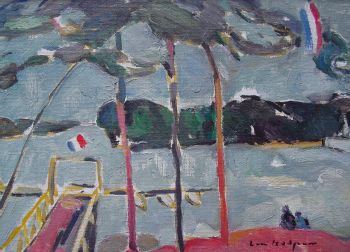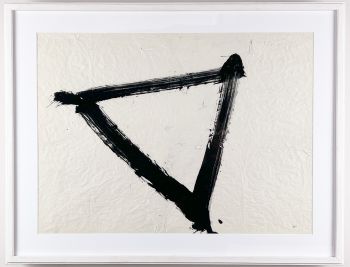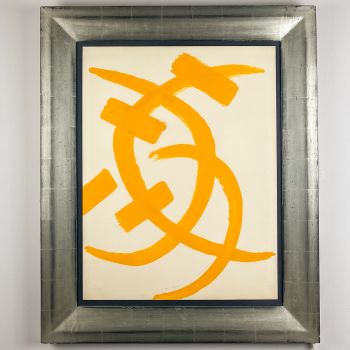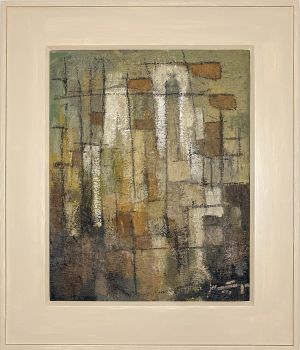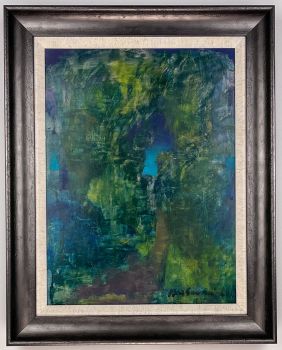Two glazed stoneware sculptures of Pinguïns – Rörstrand Sweden circa 1955 1951 - 1960
Gunnar Nylund
PedraEsmalteMadeiraGrésPintar
27 ⨯ 12 ⨯ 17 cm
ConditionVery good
€ 1.250
Van Kerkhoff Art
- Sobre arteTwo stoneware sculptures of a Emperor-pinguïn mother and child, finished in several shades of sandcoloured and brown glazes on lacquered ashwood bases.
Gunnar Nylund was particular know for his animal figures with beautiful experimental glazes. The larger examples and sculptures of exotic animals, are especially sought after.
This set of sculptures was designed by Gunnar Nylund and executed by the Swedish ceramics factory Rörstrand in the 1950’s.
They are both fully signed underneath: R with 3 crowns (Rörstrand) – GN (Gunnar Nylund) – Sweden.
About Gunnar Nylund
Gunnar Nylund (1904-1997) was a Swedish artist, ceramist and sculptor most known for his work for the Swedish ceramic manufacturer Rörstrand.
He was born in Paris to a Danish mother and a Swedish-Finnish father, both artists. His mother Fernanda Jacobsen-Nylund was a ceramist and his father Felix Nylund a sculptor. He grew up in Helsinki and moved to Copenhagen in 1917. In Denmark he received his education as an architect at the Royal Danish Academy of Fine Arts in the 1920’s. In 1929 together with Nathalie Krebs he started a ceramics workshop Nylund og Krebs that later was renamed to Saxbo.
In 1931 Nylund started working for the ceramics manufacturer Rörstrand in Lidköping in Sweden, becoming Rörstrand’s artistic director in 1937 and he continued to work there in this position until 1956. In this period Nylund became well known for his innovative feldspar glazes – popularized by renowned ceramists Berndt Friberg and Carl-Harry Stålhane – and his glazed stoneware animal sculptures.
After his time at Rörstrand he became artistic director at the Strömbergshyttans glassworks in Hovmantorp, Sweden and in the early 1960’s worked for the Nymölle Keramiska Fabrik in Lyngby, Denmark where he started producing stoneware.
Nylund crafted some 30 reliefs and sculptures commissioned for public spaces and many of his sculptures are part of museal collections ie: The National Museum in Stockholm, the Sèvres museum in Paris, the Röhsska museet in Gothenburg, the Ateneum museum in Helsinki and the Danish Museum of Art & Design.
Marked
Both marked underneath the base: Rörstrand – R (Rörstrand) with 3 crowns – GN (Gunnar Nylund) – Sweden
Execution
Rörstrand, Sweden 1951-1960
Condition
These sculpture are in very good condition. No cracks or chips.
Lacquered ashwood base included.
Literature
Mel Bryans – The Design Encyclopedia p. 535
Dimensions
Height 27,5 & 16 cm (including base)
Width 12 & 8,5 cm
Depth 17 & 9 cm
Weight 1620 grams (combined) - Sobre artista
Gunnar Nylund (1904-1997) foi um artista, designer e escultor de origem dinamarquesa e finlandesa que trabalhou predominantemente na Suécia. Um verdadeiro pioneiro das artes decorativas de meados do século, ele é considerado um dos mais importantes ceramistas do século 20 e é mais conhecido por seu trabalho com o famoso fabricante de cerâmica sueca Rörstrand.
Nylund foi exposto a várias formas de arte desde cedo, graças a seus pais artísticos. Essa exposição contribuiu muito para suas habilidades multidisciplinares e claramente serviu bem à sua carreira variada nas artes decorativas. Embora inicialmente tenha estudado arquitetura em Copenhagen, ele deixou esses estudos para aceitar um cargo permanente na fábrica de porcelana Bing & Gröndahl. Foi aí que conheceu a ceramista dinamarquesa Nathalie Krebs, com quem viria a desenvolver a sua própria gama inovadora e, mais tarde, a oficina ‘Saxbo’ em 1930.
Sua experimentação com novas formas impressionou muito Rörstrand, que o nomeou Diretor Artístico em 1932 até 1955. Após esse período, Nylund assumiu o cargo de Diretor Artístico da vidraria Strömbergshyttan enquanto ainda trabalhava como designer de cerâmica como freelancer. Embora o corpo de trabalho de Nylund em vidro seja muito menor do que em cerâmica, é claro que ele também se destacou no meio, criando vasos elegantes e atemporais em belas cores.
Como muitos de seus contemporâneos conhecidos, o trabalho de Nylund é definido por uma exploração de formas e técnicas modernas, além de seus esmaltes foscos suaves e belas cores suaves. Seus revolucionários vasos de grés são um grande exemplo disso, em que ele usou chamotte, uma matéria-prima de argila, misturada com argila de modelagem. Esse material garantiu que os objetos não desmoronassem durante a confecção, permitindo formas mais finas e delicadas.
Além do grés e do vidro, Nylund também é um escultor talentoso que foi contratado para criar muitas obras para espaços públicos, teatros, bibliotecas e bancos. Seu trabalho está exposto em vários museus suecos, incluindo o Museu Nacional de Estocolmo, bem como vários outros, como o Museu Dinamarquês de Arte e Design, o Museu de Arte Ateneum em Helsinque e o Museu Nacional de Cerâmica de Sèvres em Paris.
Você está interessado em comprar esta obra de arte?
Artwork details
Related artworks
- 1 - 4 / 4
- 1 - 4 / 24
- 1 - 4 / 24
- 1 - 4 / 24
- 1 - 4 / 24
- 1 - 4 / 12































